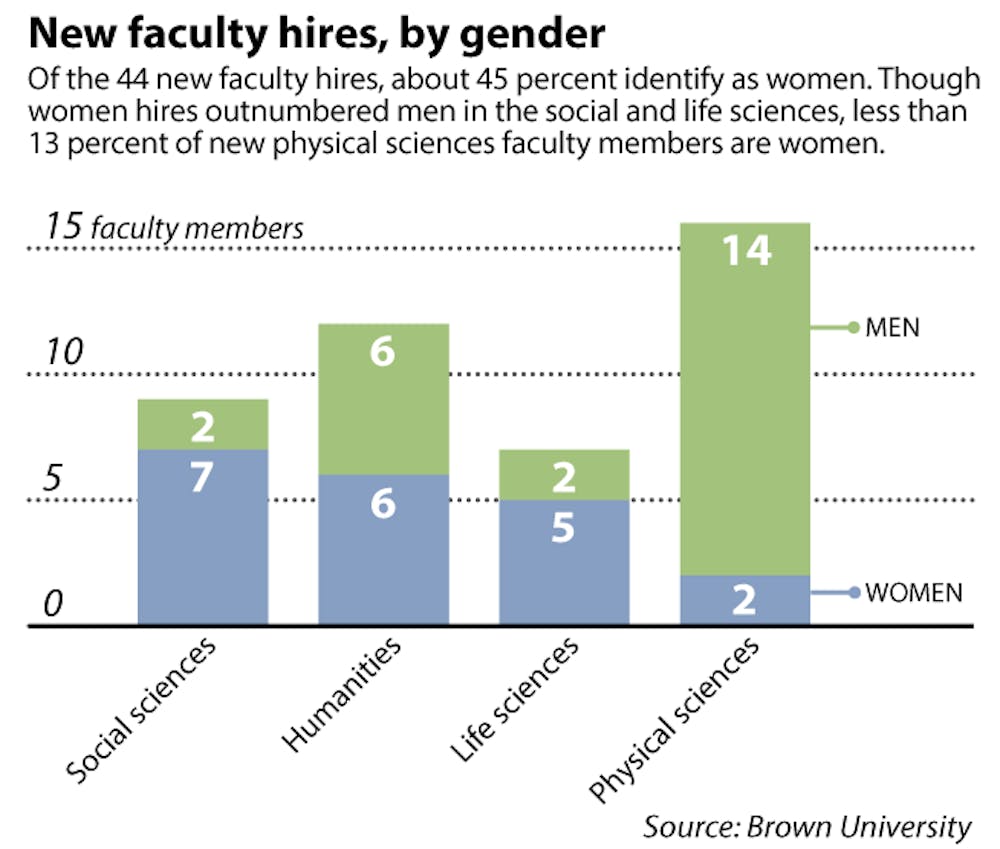Seventy-eight percent of potential new faculty members who were offered positions at the University during the 2014-15 academic year accepted their positions, said Associate Dean of the Faculty Joel Revill.
The percentage, known as the faculty yield rate, is calculated by taking the number of faculty hired and dividing it by the number of searches that were filled or closed, Revill said. A department seeking to fill a new or vacant faculty position will usually close a search if it is not satisfied with the applicant pool, he added. Searches that remain open are not accounted for in the yield rate.
The 78 percent figure marks an increase from the 65 percent yield rate for the 2013-14 school year but is still lower than the unusually high rate of 97 percent from 2012-13. After 2013’s unexpectedly high yield rate, the University intentionally curbed the number of new faculty hires in 2013-14, Dean of the Faculty Kevin McLaughlin P’12 said at the time. After standing at 713 in 2012-13, the size of the faculty rose to 736 the next year but dropped to 720 in 2014-15, the year after the University indicated it needed to control the size of the faculty. Data for the size of the faculty this semester is unavailable.
The 2015-16 school year boasts 44 new faculty members: nine in the social sciences, 12 in the humanities, seven in the life sciences and 16 in the physical sciences.
In addition to hiring new faculty members, the Office of the Dean of the Faculty also focuses on retaining the current faculty members. About 70 percent of faculty members whom the University “explicitly tried to retain” remained at Brown, Revill said, adding that the University tries to retain faculty members who are leaving for reasons other than tenure offers at other universities or personal reasons.
The University primarily tries to hire faculty members earlier in their careers, frequently at the assistant professor level, Revill said. He added that there are also some searches for more senior faculty members that require individuals further along in their careers.
Twenty people, or roughly 45 percent, of the new hires this semester are female, but only two of the 16 physical sciences hires are female.
Overall, the gender breakdown of the entire faculty has not changed over the last 10 years: From the 2008-09 to 2014-15 academic years, the percentage of female faculty members has remained at 33 percent, rising to 34 percent for one year in 2013-14, according to the Office of Institutional Research. Data on the entire faculty for this semester is not available.
Over the last five years, the gender breakdowns for humanities, life sciences and social sciences departments have also remained the same, hovering around 47, 32 and 39 percent female, respectively. Female representation in the physical sciences rose from 9 percent in 2005-06 to 17 percent in 2013-14, but it dropped to 15 percent in 2014-15.
Only 8.1 percent of the faculty in 2014-15 identified as underrepresented minorities, a number that has barely risen since the 7.9 percent recorded in 2009-10. Data on the racial diversity of the faculty for this semester are not yet available.
President Christina Paxson pledged at a faculty meeting in 2014 to double the number of underrepresented minority faculty members within the next decade, and the University is making a concerted effort to work toward this goal in faculty hires, Revill said.
Some things the University currently does to attract diverse applicants include “advertising in venues that are likely to be read by minority candidates and reaching out to specific minority subgroups within a discipline,” as well as having a “diversity representative” on every search committee, Revill said.
The University also ensures that the “pipeline” to the applicant pool leads to a diverse group of candidates by making sure that applicants of a specific search pool who come from underrepresented backgrounds are invited to campus, he said.
The Target of Opportunity program also allocates additional funding to departments to allow diverse candidates to teach at the University, Revill said. For example, if there is a female candidate who is exceeding in her specific field of study that is not related to an active search, the Target of Opportunity program will give funds to a department to hire that candidate, he said.
In addition to the Target of Opportunity program, the University has implemented the Presidential Diversity Post-Doctoral Fellowship Program this fall, said Liza Cariago-Lo, vice president for academic development, diversity and inclusion. The program invites individuals with diverse backgrounds who recently received their post-doctorate degree to come to the University for two years to complete their research and teach one course for a semester, Cariaga-Lo said.
“It’s really about ensuring that we as a university recognize that our excellence rests on our ability to serve and meet the needs of our diverse learners,” Cariaga-Lo said. “We know that, in many ways, our diverse learners are looking to faculty who look like them, share their different experiences and who bring different perspectives to the table.”
The University has a better representation of diverse groups in its student population than its faculty population, said Thomas Roberts, chair of the Faculty Executive Committee and professor of ecology and evolutionary biology, adding that the “health” of the University requires a focus on increasing this representation in the faculty.
“I don’t think we’ve been at a strong upward trajectory,” Roberts said of the number of minority faculty members, especially of those in his fields of study.
A larger part of the discussion involves thinking about how increasing the number of diverse candidates, especially women, in science, technology, engineering and mathematics fields will affect those fields as a whole, Roberts said. Studies have shown that girls perform better on average in math in elementary school, but boys perform better in high school, he said.
“Does that say something about the male or female brain? I don’t think so. It’s something in our institutions,” Roberts said.





